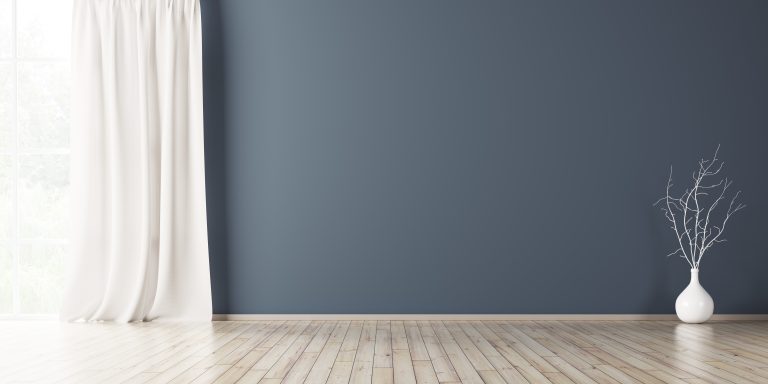What’s the Difference Between Hardwood and Bamboo Flooring?
Not only does it act as the walking surface you stand, play, and entertain on, it’s also a major determining factor in your home’s overall resale value.
As the flooring market turns their attention to more sustainable options, it’s only natural to come across two of the most environmentally-friendly floors out there: bamboo and hardwood. On the surface, they both look similar after installation and are sourced from sustainable materials. To learn the differences between hardwood and bamboo, you need to look beyond the surface.
Let’s take a look at the real differences between these popular floors below.
Price
When it comes down to it, price is one of the most important parts of purchasing a new floor. Here’s the difference in cost between hardwood and bamboo:
Wood: Soft domestic woods can often be purchased for $1-$3 per square foot, while exotic hardwood species could be as expensive as $15 to $20 per foot.
Most home buyers are willing to pay more for a home with authentic timber floors compared to homes with any other type of flooring. As a result of the high demand, timber floors generally cost more.
Bamboo: Although the end-cost of your floor will depend on the type of bamboo you install, bamboo floors (on average) cost anywhere from $2 to $6 per square foot.
Durability
Next to price, durability is one of the most important factors to consider while purchasing a new floor. The last thing any homeowner wants is to buy a new floor that deteriorates after just a few years.
In regards to durability, there are a few differences between hardwood and bamboo to consider:
Wood: Known for its ability to last up to 100 years, hardwood floors have proven their durability for centuries. Use the Janka Hardness Scale to select the species of wood that’s best for your home. Remember: the higher the hardness rating of the wood species, the more durable the timber.
Bamboo: Bamboo floors’ durability rival hardwood, but many flooring experts agree that they’re not as durable as their solid timber counterparts. Bamboo’s durability depends on the species used for the flooring – and the manufacturing process used to produce the planks.
If you need a durable bamboo floor, stranded bamboo is recommended.
Maintenance
Wood: Authentic hardwood floors are easy to maintain – most of the time. Despite their innate durability, hardwood planks are incredibly sensitive to moisture. If pet stains, water splashes, or leaks sit on the floor’s surface for too long, the planks become warped or stained.
To maintain hardwood floors, it’s recommended that you keep them dry and covered with rugs to protect the surface. You should note that accumulating scratches in the planks is common for households with pets and young children – if you notice that your floors do become scratched, hardwood floors have the unique ability to be refinished, allowing the floor to be saved after being damaged.
Bamboo: Similar to hardwood, bamboo floors really only require a quick sweeping and (damp) mopping to stay clean and in good shape. Like hardwood, bamboo floors are sensitive to moisture and should not be installed in wet locations (like bathrooms and kitchens) unless you can commit to keeping them dry of sitting moisture.
Overall, bamboo is incredibly easy to maintain. Bamboo floors can’t be refinished; however, you’ll need to install new planks (or a whole new floor) if you accumulate scratches or damage to the floor’s finish.
Sustainability
We mentioned earlier that the market is taking a serious look at bamboo because of the sustainability issues with many construction projects. Because hardwood and bamboo are both sourced from natural materials, they’re equally obvious choices for homeowners interested in building an eco-friendly home.
Wood: Composed of refinished, used hardwood from places like railroad tracks and wharfs, reclaimed floors are largely sustainable because they use no recently harvested natural resources to be made. As a result of their limited supply, the colors and grain patterns to choose from are restricted.
Wood floors that are FSC certified are the best choice for homeowners who want to select from a wide variety of plank sizes and finishes. For homeowners who are interested in a more rustic look, reclaimed hardwood planks are a worthwhile selection. Composed of refinished, used hardwood from places like railroad tracks and wharfs, reclaimed floors are largely sustainable because they use no recently harvested natural resources to be made.
Bamboo: When it comes to the sustainability of bamboo, there are some ground-rules to be aware of. While it’s true that bamboo is one of the fastest growing natural resources used for flooring (it only takes about 3-8 years for some species to become full grown, compared to hardwood that can take about 25 years). When shopping for sustainable bamboo flooring, it’s recommended to find FSC certified materials.
Many bamboo floors can look similar to authentic hardwood species, and in many ways the two floor coverings are similar. However, hardwood flooring is still believed to have a longer life-span compared to bamboo, and is also believed to have an overall larger anticipated and actual value.
If you’re interested in viewing samples of some of the hardwood or bamboo flooring offered here at GetFloors, contact us at 1-300-823-958.










